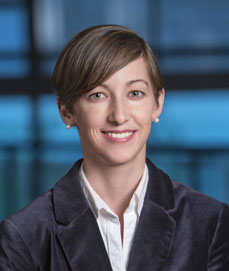
Danielle Bassett, Eduardo D. Glandt Faculty Fellow and Associate Professor in theDepartment of Bioengineering, grew up in central Pennsylvania where she and her 10 siblings were homeschooled. Back then, Bassett had aspirations to become a professional pianist, a dream shattered by stress fractures in her arm at age 16.
Now, Bassett is a renowned physicist and MacArthur fellow who has pushed the field of network science, which studies connections and interactions between parts of a whole, to new realms. Bassett’s research focuses on brain function, including work on how brains of people with schizophrenia are organized, how brain communication changes with learning, and how the brain is able to switch between tasks.
Kelly Servick of Science sat down with Bassett to talk through her incredible journey from child pianist to leading network scientist:
““By 17, discouraged by her parents from attending college and disheartened at her loss of skill while away from the keys, she expected that responsibilities as a housewife and mother would soon eclipse any hopes of a career. ‘I wasn’t happy with that plan,’ she says.
Instead, Bassett catapulted herself into a life of research in a largely uncharted scientific field now known as network neuroscience. A Ph.D. physicist and a MacArthur fellow by age 32, she has pioneered the use of concepts from physics and math to describe the dynamic connections in the human brain. ‘She’s now the doyenne of network science,’ says theoretical neuroscientist Karl Friston of University College London. ‘She came from a formal physics background but was … confronted with some of the deepest questions in neuroscience.’”
Continue reading about Bassett’s career path and evolving research interests at Science.
Reposted from the Penn Engineering Medium blog. Media contact Evan Lerner.
